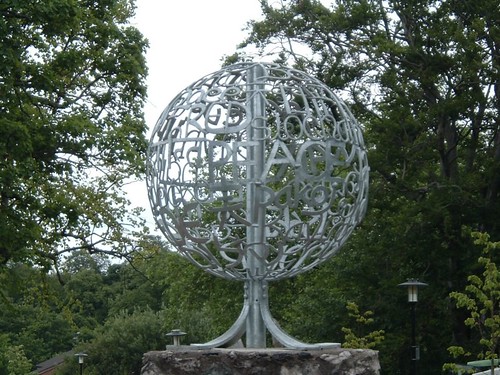

Peace Monuments
Related to International Fairs
Click links for Wikipedia lists of International Expositons and World's Fairs.
NB: This web page does not yet contain "boat people" monuments in Australia, Indonesia, and perhaps other countries.Right click image to enlarge.
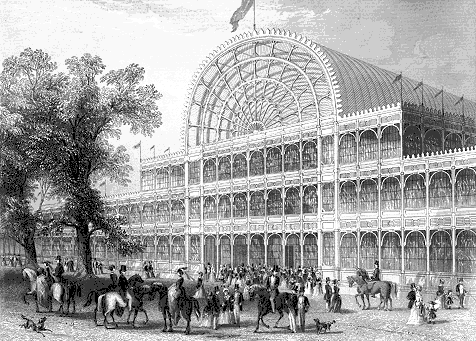

1851-1936 - Crystal Palace, London (England). "Was a cast-iron & glass building originally erected in Hyde Park to house the Great Exhibition of 1851. More than 14,000 exhibitors from around the world gathered in the Palace's 990,000 square feet (92,000 m2) of exhibition space to display examples of the latest technology developed in the Industrial Revolution. Designed by Joseph Paxton, the Great Exhibition building was 1,851 feet (564 m) long, with an interior height of 128 feet (39 m). After the exhibition, the building was moved to a new park in Penge Common next to an affluent area of London called Sydenham Hill, a well-heeled suburb full of large villas. The Crystal Palace was enlarged & stood in the area from 1854 to 1936, when it was destroyed by fire."



April 4-27, 1864 - Metropolitan Fair, Union Square, New York City, New York (USA). Sponsored by the US Sanitary Commission to raise money for relief work during the Civil War. Acording to the New-York Historical Society, "a combination museum, curiosity shop, theater, state fair, sideshow, rummage sale, and mega-department store, unquestionably the largest exposition of any kind yet organized in a single venue." Other "Sanitary Fairs" occurred "in Brooklyn, Philadelhia, Cioncinnati, Boston, St. Louis, Stamford, Albany, and later Baltimore."

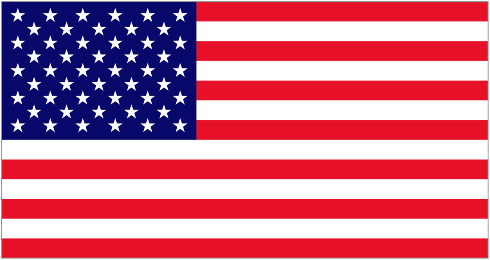
June 15-19, 1869 - Coliseum (Temple Of Peace) for the National Peace Jubilee, Back Bay, Boston, Massachusetts (USA). "A temporary building constructed solely for the purpose of hosting the Jubilee. Stood where Trinity Church & Copley Plaza Hotel are now located in Copley Square. The building was 550 feet long by 350 feet wide, covering about 4-1/2 acres. The main walls were 40 feet high, and the height of the central point of the roof was 120 feet. The Organ was purportedly the most powerful instrument ever constructed until then. The Chorus numbered about 20,000, from all parts of the Union. The Orchestra was purportedly the largest ever gathered until then, numbering about 2,000 musicians, from parts of the country as well as England, Ireland, France & Germany. The Big Drum was 12 feet in diameter and 6 feet wide."
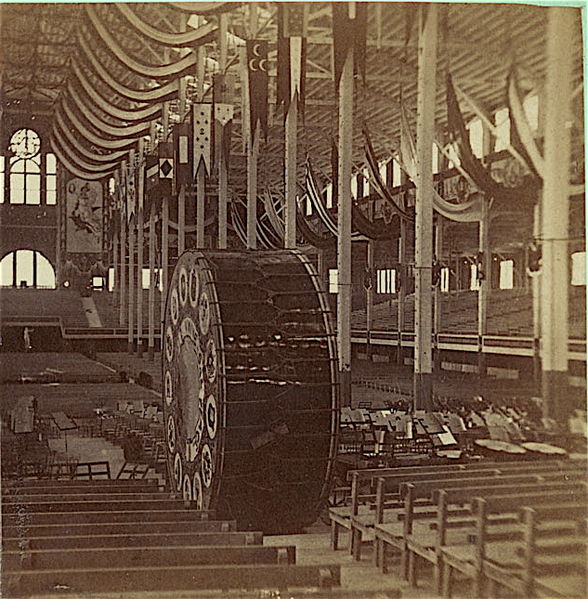

June 17-July 4, 1872 - Coliseum (Temple Of Peace?) for the World's Peace Jubilee & International Musical Festival, Back Bay, Boston, Massachusetts (USA). Newly constructed for a repeat of the 1869 Jubilee "with a seating capacity of 100,000. Erected at a cost of half a million dollars." At opening ceremonies before some 15,000 spectators, Phillips Brooks presented a prayer & Boston mayor William Gaston & Nathaniel Prentice Banks gave speeches. "'Unfortunately the size of the building and the din of the workmen caused passages of the prayer and speeches to be inaudible' During the festival 'the bands of the Grenadier guards from London, of the Garde republicaine from Paris, of the Kaiser Franz regiment from Berlin, & a band from Dublin, Ireland: with Johann Strauss, the waltz-king, Franz Abt ("Hymn of Peace"), the German song-writer, & many famous soloists, vocal & instrumental, were among the foreign attractions.' One concert featured a 'performance of Verdi's Il Trovatore by a 2,000-member orchestra, conducted by Johann Strauss, Jr., and 100 assistants, accompanied by a 20,

F
AI
R
May 10-November 10, 1876 - Centennial International Exhibition, Fairmount Park, Philadelphia, Pennsylvania (USA). "The first official World's Fair in the USA. Celebrated the 100th anniversary of the signing of the Declaration of Independence in Philadelphia. Officially named "International Exhibition of Arts, Manufactures & Products of the Soil & Mine." Fairgrounds designed by Herman J. Schwarzmann. About 10 million visitors attended, equivalent to about 20% of the population of the USA at the time." Statue of Liberty exhibited.


May 6-October 31, 1889 - Eiffel Tower, Exposition Universelle, Paris, (France). "Covered a total area of 0.96 km², including the Champ de Mars, the Trocadéro, the quai d'Orsay, a part of the Seine & the Invalides esplanade... Held during the year of the 100th anniversary of the storming of the Bastille, an event traditionally considered as the symbol for the beginning of the French Revolution. Included a reconstruction of the Bastille & its surrounding neighborhood, but with the interior courtyard covered with a blue ceiling decorated with fleur-de-lys & used as a ball room & gathering place."
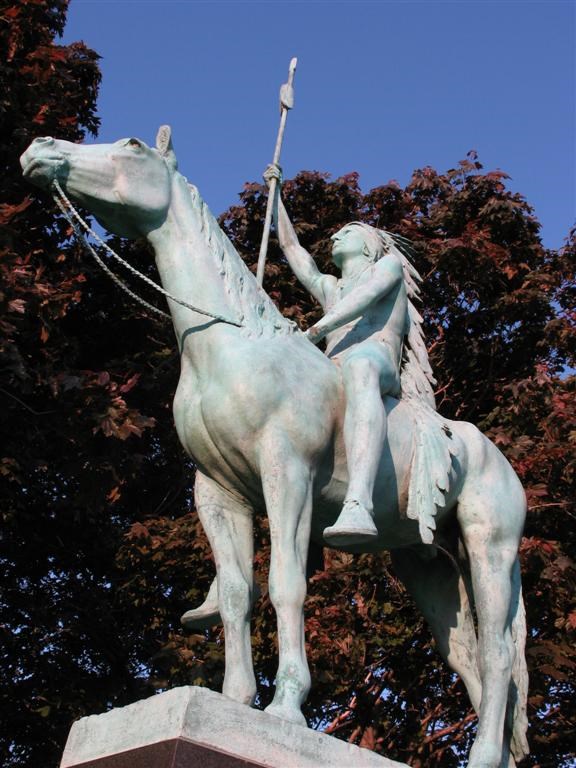


1890 - "A Signal of Peace," Chicago, Illinois (USA). "Represents a Sioux Chief on horseback, his right hand holding a spear pointed upward in a gesture of peace." A gift of art patron Judge Lambert Tree [1832-1910]. Sculpted in France by Cyrus E. Dallin [1861-1944] and exhibited at the World's Columbian Exposition (World's Fair) in 1893. Still exists.

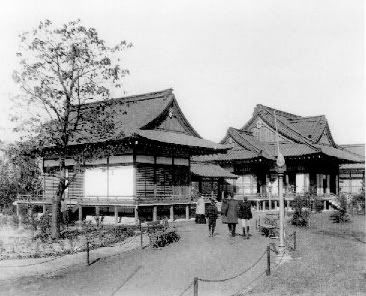



1893 - Japanese Pavilion, World's Columbian Exposition (Chicago World's Fair), Chicago, Illinois (USA). "A replica of the Phoenix Hall (Hodo), the only surviving building of Fujiwara Michinaga's palace [at Uji, near Kyoto], which was converted to a temple, Byodo-in, in 1052." This replica no longer exists. Another, permanent replica was constructed about 1970 in the Valley of the Temples, Oahu Island, Hawaii (qv).

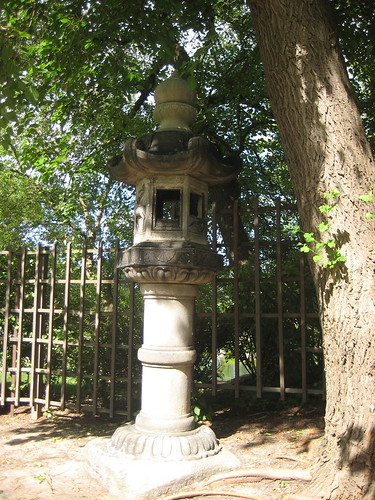


1893 - Kasuga Stone Lantern, Osaka Garden, Jackson Park, Chicago, Illinois (USA). Only surviving part of the Japanese Pavilion at the World's Columbian Exposition (Chicago World's Fair) in 1893.



1893 - Women's Building, World's Columbian Exposition, Chicago, Illinois (USA). "Sophia Hayden [1968-1953], one of the few women architects in 19th-century America, graduated from MIT and, as her first project, designed this 80,000 square-foot, two-story building. A young woman, Hayden evidently suffered some kind of breakdown by the end of the project and never again designed a building."
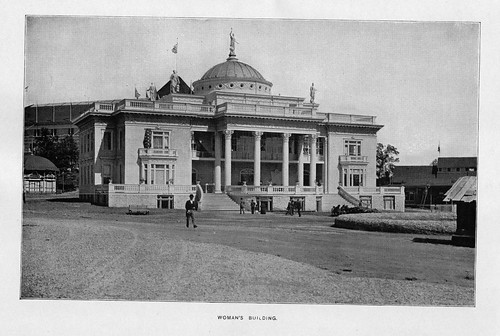
F
AI
R
1895 - Women's Building, Cotton States & International Exposition (now Piedmont Park), Atlanta, Georgia (USA).


F
AI
R
1897 - Woman's Building, Tennessee Centennial Exposition (now Centennial Park), Nashville, Tennessee (USA). No longer exists. Site (near the fair's full-scale reproduction of the Parthenon) is marked by a subsequent monument with a sphere on top. Its plaque contains two quotations by Mrs. Van Leer (Kate) Kirkman, President, Woman's Department: "That that is round can be no rounder" and "Women's Work. Whatever may be necessary to preserve the sanctity of the home and ensure the freedom of the state." Lower image by EWL.

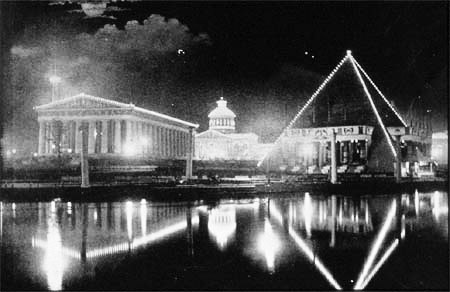
F
AI
R
1897 - Negro Building, Tennessee Centennial Exposition (now Centennial Park), Nashville, Tennessee (USA). No longer exists. "Largest-ever display of African-American life and achievement." From dedication speech: "Here...the world may see the other side of Negro life than 'Sam Johnson, the chicken thief.' Here it may see the healthful buds of Negro handicraft, Negro art, science, literature, invention... Here... the old master who followed Lee's tattered banners... down to Appomattox sacrifices his pro-slavery ideas, and builds a monument to Negro fidelity and industry; and here the Negro brings the product of his brain and hand in grateful testimony to the friendly feelings between us."

April 15-November 12, 1900 - Globe Celeste / Celestial Globe, Exposition Universelle, Paris (France). Constructed near the Eifel Tower (which had been constructed tor the previous exposition in 1889). See "Trylon & Perisphere" at the New York World's Fair in 1939-1940.



1910 - PAX / Peace Monument, Zaragosa (Spain). Honors Basilio Paraíso Lasús [1849-1930] who led Exposición Hispano-Francesa / Spanish-French Exposition in 1908. Has the city's lion & two naked charibs on top & bas reliefs of peaceful scenes on the sides.




1910 - Garden of Peace / Heiwa-en, Hammersmith Park, South Africa Road, White City, Shepherd's Bush, London (England). "Created in 1910 as a part of the great Japan-British Exhibition in which Meiji Japan fully demonstrated her technology & culture to the West for the first time." Restored for its centennial in 2010. "What remains of a much larger garden... the oldest traditional Japanese garden in a public place in Britain... renovated in accordance with the ancient principles & techniques that dictated its creation 100 years has created two new play spaces with a distinct Japanese inspiration." Chick here for story about "an ecstatic Japanese Matsuri-style garden party in the newly restored Heiwa-en (Japanese Peace Garden)" on May 23, 2010. World's first peace garden?


1922 - Peace Tower, Peace Exhibition / Heiwa kinen Tokyo hakurankai kyosankai, Ueno Park, Tokyo (Japan). "At the Peace Commemorative Tokyo Exposition in 1922, a seaplane that sped around on the Shinobazu pond surface was very popular. After the Great Kanto Earthquake in September 1922, The park was used as a place of refuge, serving to make people aware of the importance of parks in large cities. Four months later, in January 1923, Ueno Park was presented to Tokyo City to celebrate the wedding of the crown prince. Since then, the park has been one of the most popular places in Tokyo."
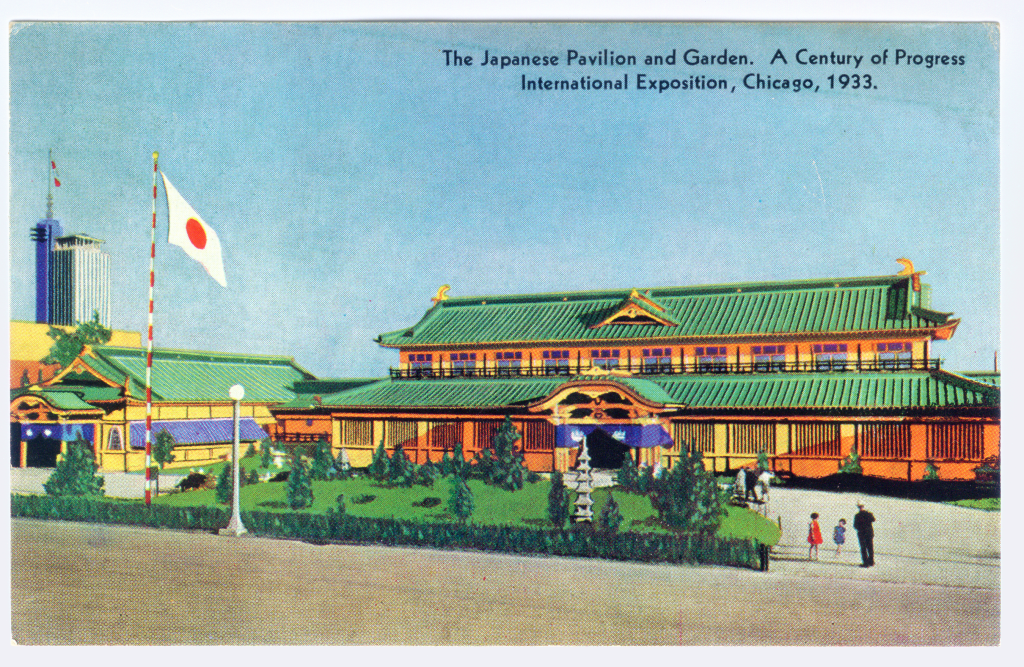

1933-1934 - Japanese Pavilion, Century of Progress International Exposition (Chicago World's Fair), Chicago, Illinois (USA). "A typical example of Japanese architecture. An army of workmen and engineers came over from Japan bringing their own tools and materials to construct the building. The exhibits showed what Japan was doing in the peaceful arts -- militarism was not part of the exhibits."



1936 - International Friendship Gardens, US Highway 12, Michigan City, Indiana (USA). Permanent spinoff of the "Old Mill Garden" at the Chicago World's Fair ('A Century of Progress International Exposition') in 1933-34. Theme of the "Old Mill Garden" was "Peace and Friendship To All Nations."
March 15, 1937 - Nagoya Pan-Pacific Peace Exposition, Minami Ward , Nagoya (Japan). A world's fair held from 15 March to 31 May 1937. Twenty-eight countries were represented, including Canada & USA. Click here for YouTube animation of exposition buildings in Japanese. Higashiyama Zoo & Botanical Gardens was opened the same year.



1937 - Guernica, Museo Nacional Centro de Arte Reina Sofia (MNCARS), Madrid (Span). Painted by Pablo Picasso [1881-1973]. Commisisoned by the government of Spain for the Paris International Exposition. Full sized copy at the United Nations in New York City.

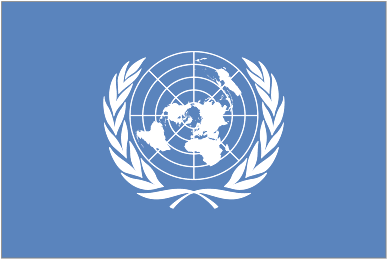
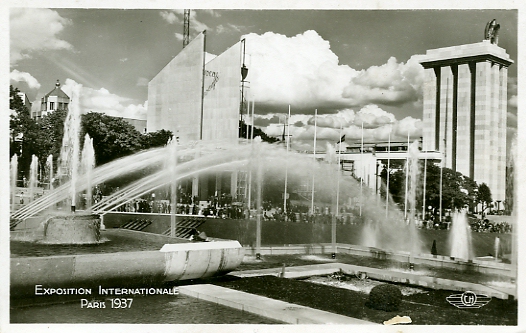
1937 - Fontaine a la Paix, Exposition Internationale "Arts et Techniques dans la Vie moderne," Paris (France). Also called Exposition Spécialisée de 1937.


1938 - Peace Cairn, Bellahouston Park, Glasgow, Scotland (UK). "Erected for the 1938 Empire Exhibition. Has numerous shaped blocks of stone within it, on which are engraved the names of the organisations & clans that attended the exhibition which were deeply concerned with the real possibility of war. The modern steel globe on top was added in July 2004 & features [the word] 'Peace' in different languages. It was designed by Elspeth Bennie, Ironhorse Studios, as part of the 'Grounds for Play' project."
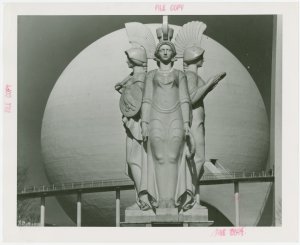


1939 - "Four Victories of Peace" Statue, Court of Power, New York World's Fair, New York City, New York (USA). Designed by by John Gregory [1879-1958]. Depicted four female figures representing Wheels, Wings, Wheat & Wisdom. Note Perisphere & Trylon and Helicline in background of the images. What became of this statue?

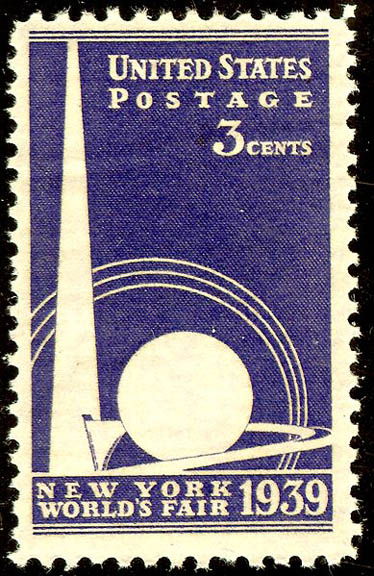
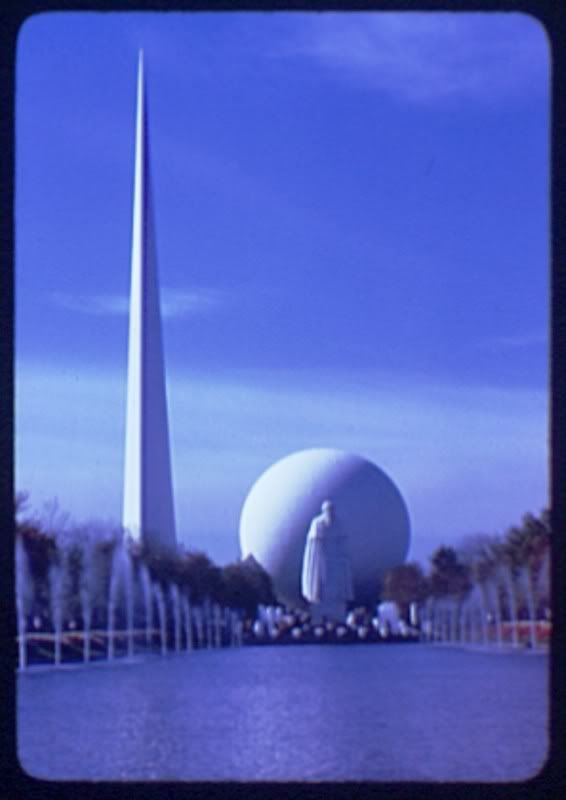


1939-1940 - "Trylon & Perisphere," New York World's Fair, New York City, New York (USA). "The Theme Center of the fair. Connected to the Trylon, which stood 700 feet tall, by what was at the time the world's longest escalator, the Perisphere was 180 feet in diameter. It housed a diorama called 'Democracity' which, in keeping with the fair's theme 'The World of Tomorrow,' depicted a utopian city-of-the-future," as did "Futurama" sponsored by General Motors. Note similarity to the Eifel Tower and Celestial Globe in Paris in 1900.

1939 - Palestine Pavilion, New York World's Fair, New York City, New York (USA). "Introduced the world to the concept of a modern Jewish state, which a decade later would become Israel. The pavilion featured on its facade an enormous 14-foot-tall (4.3 m) hammered repousse copper relief sculpture entitled "The Scholar, The Laborer & the Toiler of the Soil" by the noted Art Deco sculptor Maurice Ascalon [1913-2003]." /// "Three million Americans toured the very popular Palestine Pavilion. There was no mention there of Arabs." /// Ascalon's sculpture is now part of the collection of the Spertus Museum in Chicago, Illinois (USA). Posted on March 30, 2011, by ascalonstudios: "Nudging Sleeping Giants. On a recent visit to Chicago, I was provided with a unique opportunity. I was permitted into the museum archives of the Spertus Institute where I was able to view an artwork created by the hands of my grandfather, Maurice Ascalon, some 70 years ago. Although I had, on countless occasions, seen photos of his massive Art Deco sculpture, this was the first time I had the experience of viewing the project in person. It is among the most historically-significant works to emigre [sic] from modern Israel in the years before statehood. But for decades since, the 3 massive 14-foot tall figures that comprise the artwork have been at rest - as if in the midst of a deep sleep - lying atop shelves in the Spertus archives [lower image]..."


1939-1940 - "The Peacemakers" mural, Court of Pacifica, Golden Gate International Exposition (California World's Fair), Treasure Island, San Francisco, California (USA). By the three Bruton Sisters (Helen, Esther & Margaret) [1894-1992], as seen behind mural portion in right image. The fair lasted two years (1939-1940).


1939-1940 - Temple of Religion & Tower of Peace, Golden Gate International Exposition (California World's Fair), Treasure Island, San Francisco, California (USA). "Representation of various world religions certainly occurred at earlier expositions. What is notable about this exposition's presentation is the theme of religious unity. Along with more typical Christian groups, the Fair included representations of Buddhists, Bahai'is, Christian Scientists, Jews, Mormons, Protestants & others. This is particularly interesting in light of the impending World War that would embroil nations in a struggle that emphasized disunity & differences. Rabbi Rudolph I. Coffee states, 'Unitedly we embarked on this spiritual adventure, & in working together, we learned to know & love one another.'"
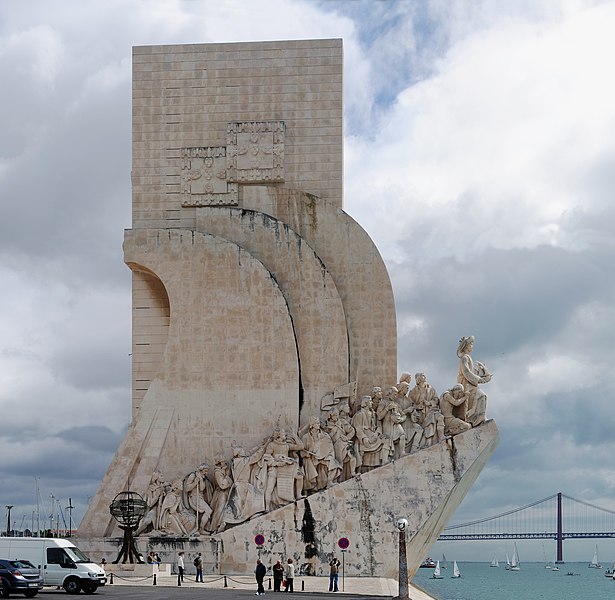


S
C
UL
P
T
U
R
E1940 - Padrão dos Descobrimentos / Monument to the Discoveries, Tagus Estuary, Lisbon (Portugal). "Celebrates Portuguese who took part in the Age of Discovery, or the Age of Exploration, of the 15th and 16th centuries. Located where ships departed to their often unknown destinations. A 52 metre-high slab of concrete carved into the shape of the prow of a ship. Side facing away from the river has a carved sword stretching the full height of the monument. Conceived by Portuguese artists, architect Cottinelli Telmo and sculptor Leopoldo de Almeida [1898-1975], as a temporary beacon of the Exposição do Mundo Português / Portuguese World Fair in 1940."
S
C
UL
P
T
U
R
E
1992 - Portuguese Navigators Monument, Brenton Point, Newport, Rhode Island (USA). "Oceanfront monument celebrating world navigators." "Representative of an armillary sphere, an ancient navigational instrument used by the explorers and still displayed today on the flag of Portugal." Also "a sphere representing the three fourths of the world that the Portuguese navigators discovered."
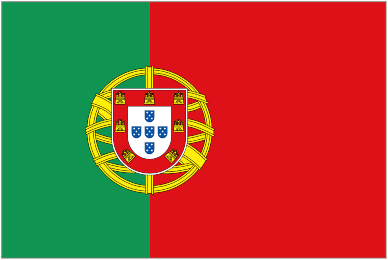

T
A
PI
S
T
R
Y
1955 - "Guernica," UN Headquarters, New York City, New York (USA). Full-sized tapistry version of original commisisoned by the government of Spain for the Paris International Exposition and painted in 1937 by Pablo Picasso [1881-1973]. Original is in Madrid (qv).



1958 - "Atomium," Atomiumsquare, 1020 Laken, Brussels (Belgium). Theme structure of the Exposition Universelle et Internationale (1958 Brussels Worlds Fair). Renovated in 2004-2006, and 50th anniversary celebrated in 2008. Visited by EWL.

1962 - Kobe Bell, near Intiman Playhouse, Seattle Center (former world's fair grounds), Seattle, Washington, USA. Gift from sister city Kobe (Japan) to the City of Seattle at time of the Seattle World's Fair (also know as the Century 21 Exposition).



1964-1965 - "Unisphere,", New York World's Fair, Flusing Meadow, Queens, New York City, New York (USA). Theme structure of the fair whose theme was "Peace Through Understanding." Now "one of the borough's most iconic and enduring symbols." Visited by EWL.

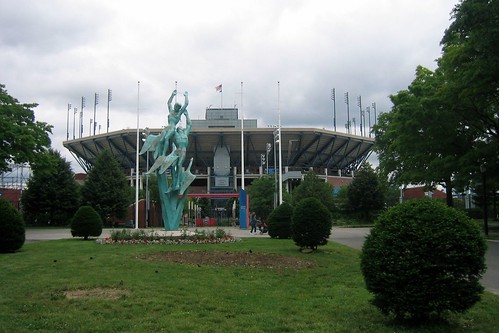

1964-1965 - "Freedom of the Human Spirit," New York World's Fair, Flusing Meadow, Queens, New York City, New York (USA). By Marshall W. Fredericks [1908-1998]. Moved in 1996 to the main entrance of the Arthur Ashe Stadium, National Tennis Center (NTC), also in Flushing (right image). The artist made a second casting of the 28-foot tall sculpture in 1986, and it was installed in his hometown, Birmingham, Michigan (left image).


1964-1965 - World Peace Screen, Teaneck-Hackensack Campus, Fairleigh Dickinson University (FDU), Teaneck, New Jersey (USA). A 50-foot sculpture created by Austrian-American artist (and FDU graduate - BS’58 (R)) Paul Von Ringelheim. Originally displayed at the 1964–65 New York World’s Fair. On the FDU campus since 1965.

1964-1965 - "Peace Through Understanding" (Pavilion of the Vatican), New York World's Fair, Flusing Meadow, Queens, New York City, New York (USA). "Designed to have distinct settings for its major exhibits -- Michelangelo's "Pieta" and an early Christian sculpture from the catacombs, "The Good Shepard."


1965 St. Mary Mother of the Redeemer, 69 Groton Long Point Road, Groton, Connecticut (USA). This Catholic Church obtained the cupola of the Vatican Pavlion after the fair.


1967 - Environment Museum, Environment Canada, Biosphere, Montréal, Québec (Canada). "An exclusive venue to better understand major environmental issues, including those related to water, air, climate change, sustainable development and responsible consumption." Former US pavilion and "symbol of Expo '67, the sphere was designed by visionary architect Buckminster Fuller [1895-1983] and has an important place in the history of contemporary architecture. The largest building of its kind in the world, its structure reproduces more than 75% of a sphere."




1970 Japanese Peace Bell from United Nations in New York City is displayed for six months in the UN pavilion at Expo '70, Expo Memorial Park, Osaka (Japan). The bell is rung every day at Noon. Third image shows Tower of the Sun in Expo Memorial Park.




May 31, 1982 - SunSphere, 1982 World's Fair, Knoxville, Tennessee (USA). Theme structure of the 1982 World's Fair. Theme of the exposition was "Energy Turns the World." Click here for other peace towers.



1990 International Friendship Pavilion, City of Osaka Pavilion, International Garden and Greenery Exposition (also known as Hana-haku, ''Flower Expo'' and Expo '90), now Hattori Ryokuchi Park [sic], Osaka (Japan).

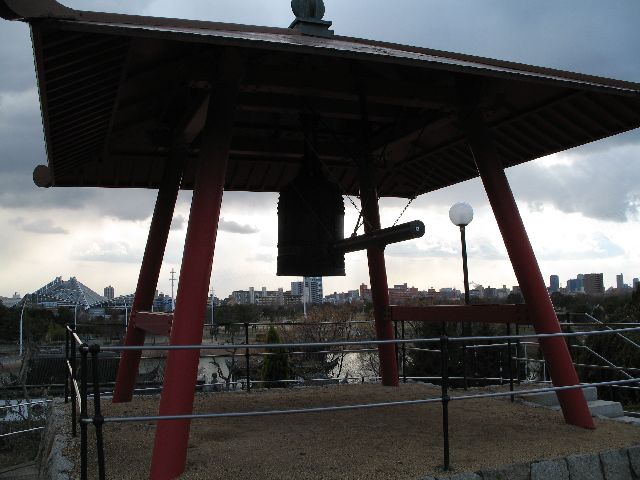


March 1990 - World Peace Bell, Tsurumi Ryokuchi Park [sic], Osaka (Japan). Installed & dedicated during International Garden and Greenery Exposition (also known as Hana-haku, ''Flower Expo'' and Expo '90). Visited by the Emperor & Empress on April 23, 1990.





